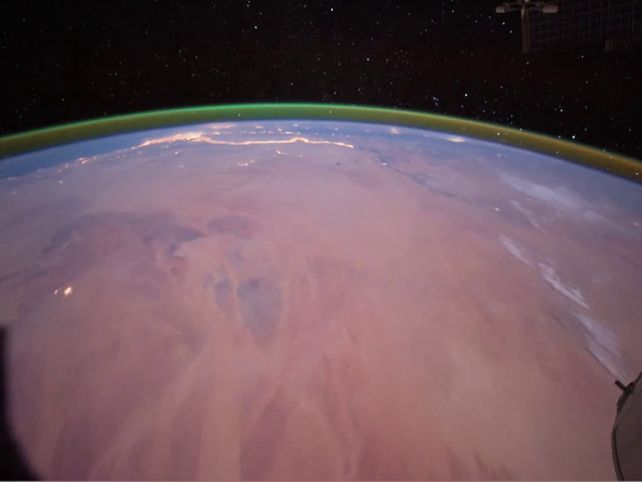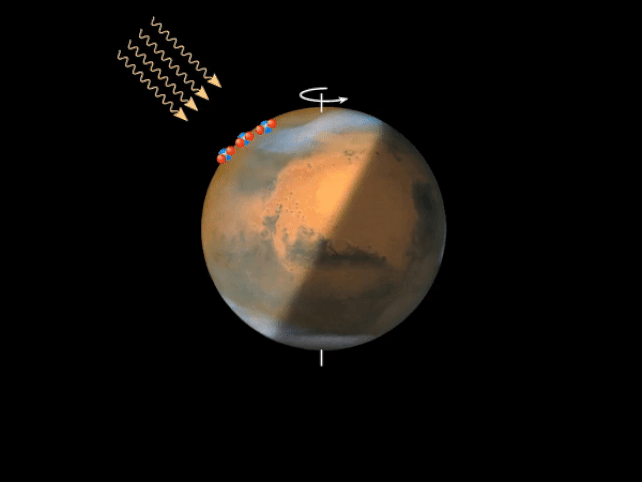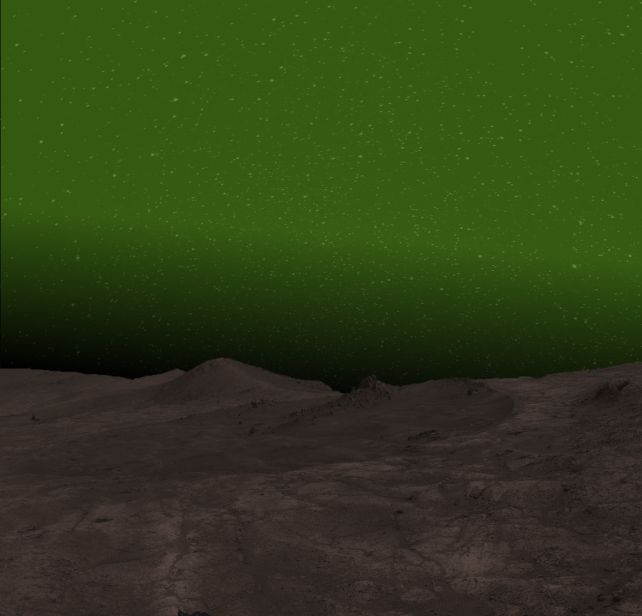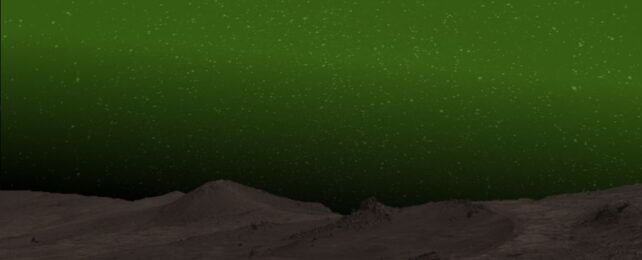For the first time, a soft green glow has been detected in the night sky of Mars that we'd be able to see with our human eyes.
As it orbits Mars, the European Space Agency's (ESA) ExoMars Trace Gas Orbiter mission has spotted the Martian night sky glowing in light in the optical spectrum.
And the light is so bright in the polar regions that human explorers might even be able to use it to see, if the night is clear of clouds.
"These observations are unexpected and interesting for future trips to the Red Planet," says planetary scientist Jean-Claude Gérard of the University of Liège in Belgium.
Actually, nightglow is a relatively common phenomenon in the atmospheres of the Solar System. A number of things can cause our atmosphere to emit its own light at night, but few things more than our own Sun.
During the day, sunlight splits apart molecules in a process called photodissociation. However, on the night side of the atmosphere, away from the harsh radiation of the Sun, the loose atoms can recombine into molecules, releasing their excess energy as photons as they do so.

Here on Earth, the nightglow is visible from space as layers of green, golden, and even reddish light, depending on the molecules involved.
But on other planets, things are a little less spectacular, at least to human eyes. The nightglow on Venus is infrared. On Jupiter, the glow is more ultraviolet (and apparently variable).
On Mars, infrared and ultraviolet nightglow have been seen. Scientists have even seen dayglow caused by the atmospheric absorption and release of energy from solar radiation in the visible spectrum on Mars (although you wouldn't be able to see it yourself, as a Mars explorer; daylight is simply too bright).
But "No nightglow spectrum has been observed so far in the visible domain," the researchers write. "Scattered solar light hinders such measurements from Earth's ground and no space-borne instrument has observed the Mars visible nightglow."

Well, that's until now. Intrigued by the discovery of infrared and ultraviolet nightglow and visible and ultraviolet dayglow on Mars, Gérard and his colleagues studied data from the Trace Gas Orbiter, pointing the instruments at the edge of the atmosphere, looking for signs of nightglow across ultraviolet and visible wavelengths.
They found it. Between altitudes of 40 and 60 kilometers (25 to 37 miles), visible nightglow was spotted at the south pole during its Martian winter.
This, the researchers say, is the result of oxygen atoms transported from the sunny Martian day combining into dioxygen (O2), emitting a glow in the process – one bright enough to be seen from the ground.
Now, we don't actually have any humans on the ground on Mars. Space agencies are working on it, but it's a little way off yet. More immediately, though, the discovery of visible nightglow has some interesting scientific inferences.

That's because atmospheric glows of all kinds are tracers of atmospheric chemistry, circulation, and processes. Mars only has a very thin atmosphere, and figuring out what's in it can help us figure out why, and where the rest of it went.
That can help us figure out why some worlds are lovely and habitable, like Earth, and how some end up otherwise, which is of interest to scientists looking for habitable worlds elsewhere in the galaxy.
And, of course, knowing how the atmosphere on Mars works is something that will benefit those future explorers.
"This O2 nightglow should be observable from a Martian orbiter as well as from the Martian surface with the naked eye under clear sky conditions," the researchers write.
"These observations pave the way to future global observations of the Martian atmospheric circulation with simpler lower-cost instrumentation."
Can't argue with that.
The research has been published in Nature Astronomy.
